A Jaunt in Yogyakarta
Blog post description.
COUNTRIES
After saying our farewells to Singapore and stopping for one last mango steak (my newly discovered love in the fruit realm), we made our way to Indonesia, where we would travel overland (and sea) from Central Java to Bali. Our journey began in Yogyakarta (pronounced joug-Jakarta), which is often described as the cultural capital of Java. Compared to the Jakarta at 10.5M people, we felt Yogyakarta would be more our speed (~500k pop., much smaller city). After a long but highly efficient train from the airport to the city, we checked in and made our way to the palace and city center, braving rain for a walk down the renowned Maliboro St. Lined with shops, restaurants, and performances, this street serves as city center, with Dutch era colonial buildings bookending the street and quick access to the centra station nearby. We stopped off at what appeared to be a buffet of sorts, with dozens of dishes laid on carts in a shelter. There were no labels and no one spoke english, but it was definitely the place to be for the locals around so we went for it! Wedined on an array of satays (various meats and tofus on sticks, including several differently flavored chicken heads) tempeh, baked tofu, little pockets of rice wrapped in banana or coconut leaf, sesame balls, and other entirely unidentifiable dishes to our un-educated eyes. We got a little worried, questioning our choice to eat street food, not straight off the fire and not knowing what it was, but proved to be good food and non-illness inducing.
Our next day began with some self guided touring into town, starting at the pools of Taman Sari. Taman Sari was a palace and gardens built by the local sultanate in the 1400's. Its beautiful structure, pools with stairsteps surrounded by walls and a single high tower with a questionable purpose; this tower was apparently used by the king to observe women bathing in picturesque baths in order to select future wives or concubines. It now serves as a top instagram destination. We enjoyed wandering the the various buildings, before stopping off at a few different coffee shops and enjoying drinks, and reeling at the incredibly low price of everything in Java. Our Grab taxis into town had been a journey of about 20 minutes and cost $2-$3, while our very fancy coffees were less than a dollar! In fact, Java has proved the most low cost place we've visited by far.
Our afternoon included a voyage roughly an hour outside of city center to view Prambanan, a complex of Hindu temples among the largest in the country. We had an exceptional tour guide full of jokes and knowledge of the temple grounds, who filled our afternoon with details of the construction, religion, and symbolism of the intricate carvings and structures. Dedicated primarily to the Hindu god Shiva, the temples were likely built in the 7th century, and are in the constant process of being restored.
The three main tall towers were puzzled back together from the old carved lava bricks in the 1980s, and each year they are able re-raise about one additional tower. There are some 180 smaller towers still in piles, yet to be rebuilt. Overall, the temple site is a striking panorama and we greatly enjoyed visiting.
Our time in Yogyakarta ended at a local village, where Dana and I spent the day practicing in the traditional craft of Bhatik making. This involves using Layers of wax and dyes to create intricate patterns on cloth for traditional clothing (and today, for all sorts of textiles), including what I’ll call a hot wax pencil for doing highly detailed work. Our hosts for the day were true experts in those craft (we viewed their exhibition at a nearby gallery over lunch, and they apparently have showings in New York fairly regularly). Despite my lack of artistic ability, Dana and I successfully created our own murals (with the helping of the dying expertise of artists)! With that, we wrapped up our time in Yogyakarta and made our way east to Malang by train and bus (~6 hours, very nice business class), where we would seek out adventures of a volcanic nature.
We had come to this part of the world, knowing it was going into rainy season for many parts of the island. And in Java, in rained almost every day, usually just in the late afternoon and evening, but progressively more since traveling through Indonesia. On this night, we made through only slightly soggy, and especially grateful for our waterproof trail runners.
Our day of adventures continued with a viewing of the Ramayana Ballet. We waited for the start of the play at a restaurant overlooking the Prambanan temples as sun set and the rain started. The meal was an open buffet and aimed at visitors, so we were finally able to put some names to foods, as each was nicely labeled. I absolutely loved a drink called wedang sendang, a hot drink made from ginger and a bark of sappan wood, while Dana enjoyed the Java tea, a black tea with Jasmine and other flavorings in it. After chatting with our neighbors, an a Australian ambassador to Indonesia and his wife, we wandered into the theater. The ballet was a fantastic performance of dance with strong theater elements, set to live gamelan instrument performance. The dance is a retelling of sections of the Ramayana, a very popular Hindu religious epic. It is about Prince Ramayana's quest to rescue his wife Sita from an evil king, with help of the monkey god Hanuman1. Honestly there is so much history between the temple and ballet that I’ll leave it to Dana in case she wants to do a dedicated post; a single line or two here just don’t do either experience justice.
Footnotes:
1) Dana here! I'm not going to write a separate post, (although I did add a few details in editing!) but the Ramayana is worth looking up if of interest. I remember learning about the story while I was in India. I'm never clear why this particular story is popular in Hinduism, especially given that Rama is not even one of the primary gods, but a sub-incarnation of one. I suppose, one reason is that its just a compelling story--fun to hear, read or watch. That being said, I've always found it to represent an especially nasty side of Hindu culture regarding treatment of women. Sita, the stolen wife around which the story centers, has no agency at all. Towards the end of the story, after Rama rescues her, he accuses her of being impure (aka having been raped while imprisoned by the evil king) and submits her to the pyre. In the story, Sita survives the fire due to her "purity" and help from the gods and the two reunite joyously. In real life, there is a long history and tradition of Hindu women married to important Brahman men being expected to jump on the funeral pyre of their husbands or suffer shame on themselves and their whole family; the practice, known as suttee (or sati) is rare but revered in story and tradition.
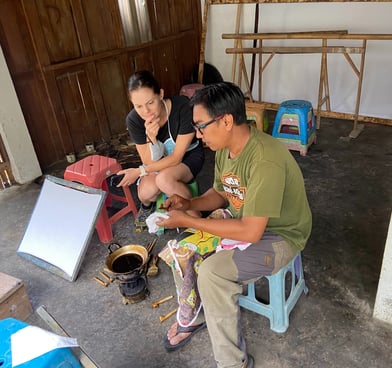

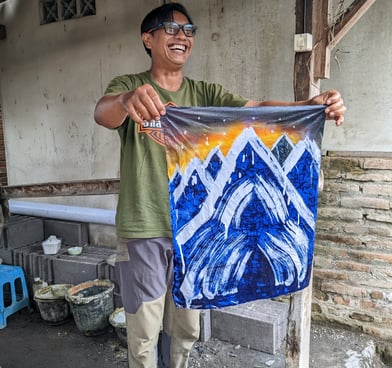

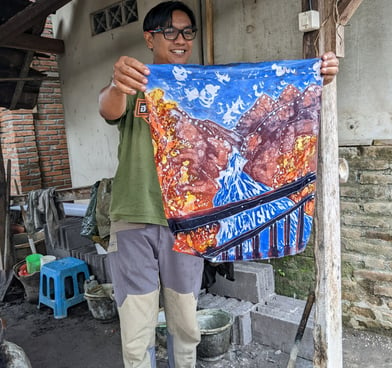

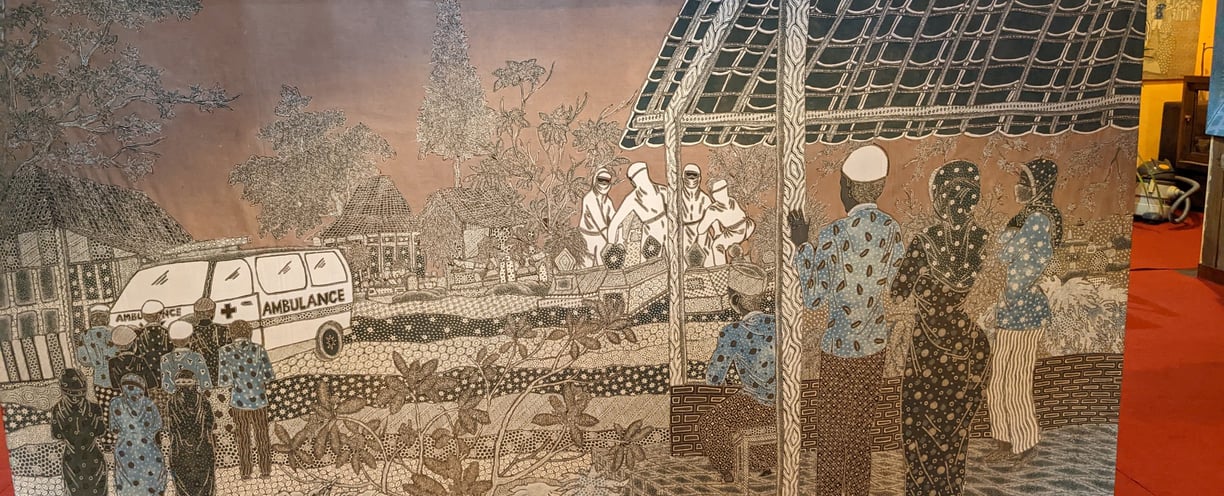

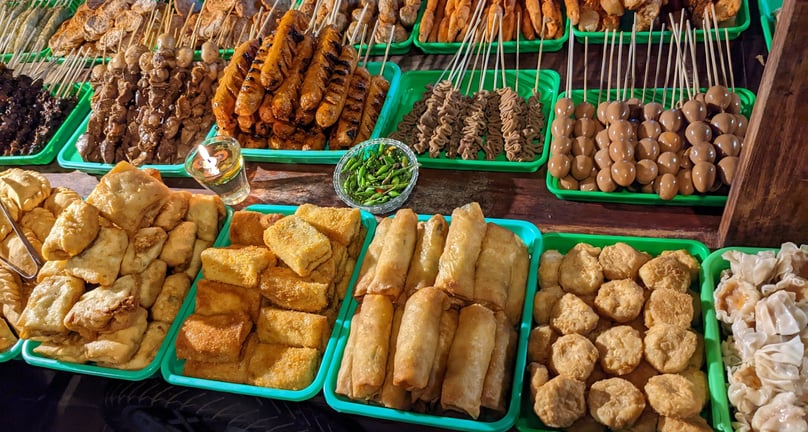

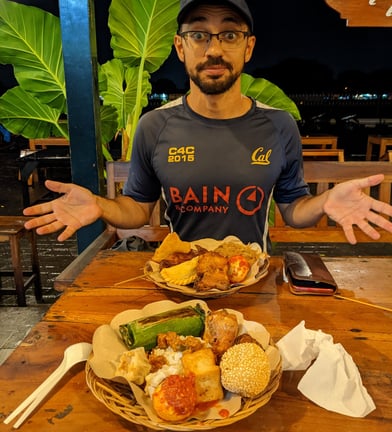

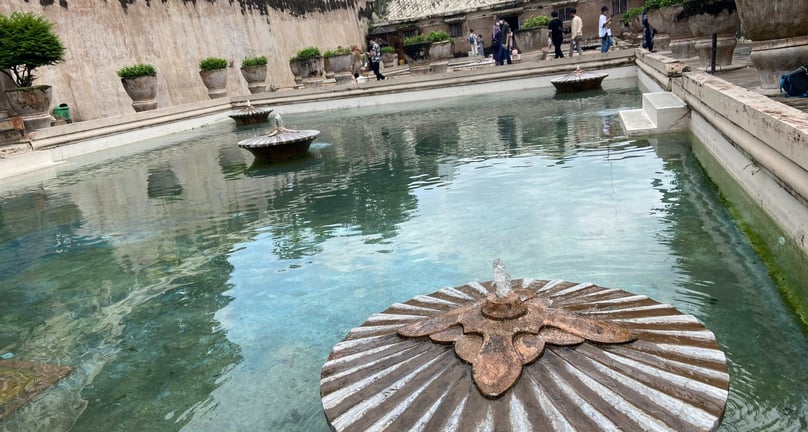

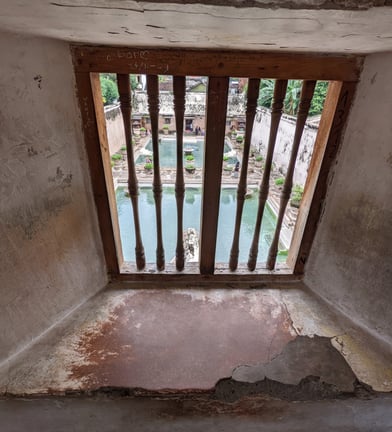

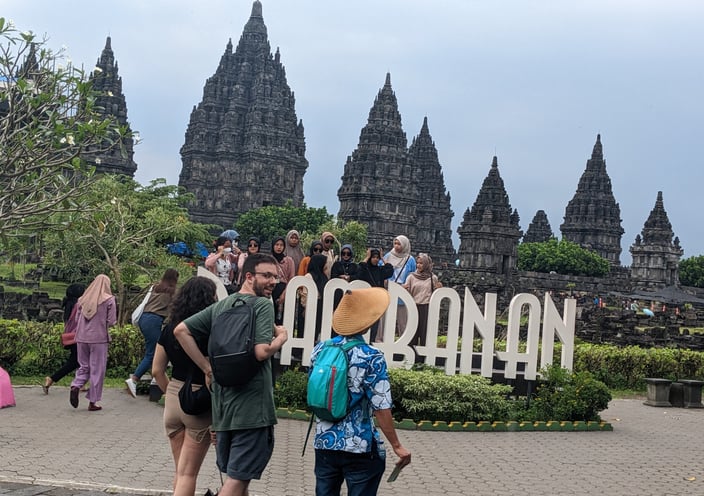

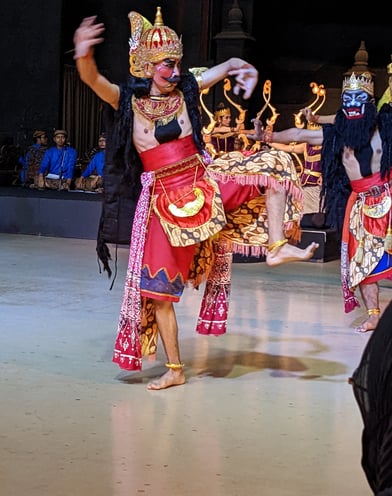

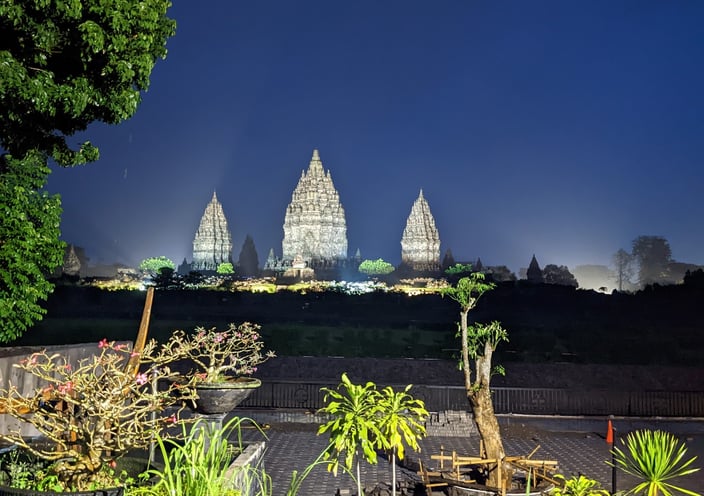

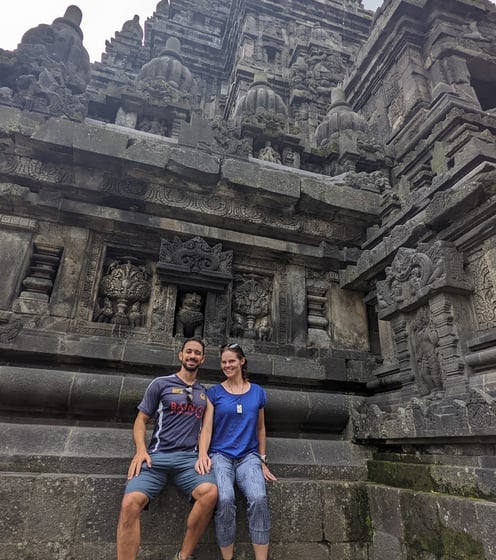

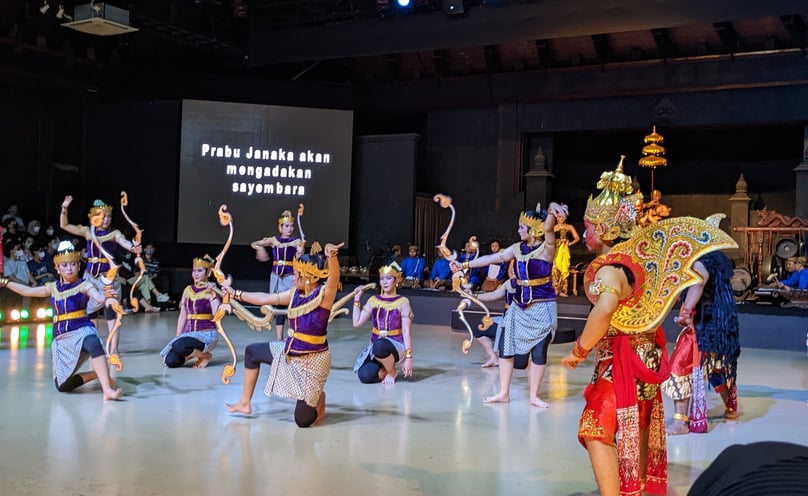

Our unexpected outdoor buffet on a cart, this picture only shows a small percentage of its bounty.
We're not sure if its a good idea or not, but our stomachs survived.
Above: the view from the tower; a good view to choose your next concubine as she bathes.
On the ground, you can see the small pot of hot wax.
My batik creation.
Dana's batik creation.
Actual batik, created by an expert. This piece was part of a gallery set illustrating the experience of the experience of COVID pandemic in small-town Java.
The arrows weren't sharp, but they did actually shoot them across the stage during the play!
You want to try batik? How about satay? leave us a note!
1875 E 27th Ave
Denver, CO 80205
